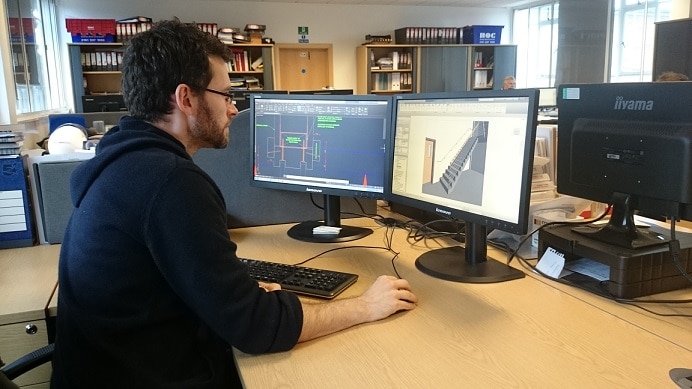Jim Nania, chairman of interior architectural contractor Stortford Interiors, discusses the challenges that the supply chain faces in its attempts to become BIM Level 2 compliant.
Stortford Interiors is a huge supporter of the concept of BIM – the company believes in what is a fantastic concept. Having said that, we feel that there are three issues to be addressed on the road to becoming Level 2 compliant, which all businesses must be by April 2016 if they wish to be involved with centrally procured government-funded projects.
As a reminder – and as helpfully outlined in FIS’s BIM ToolBox for Specialist Contractors – the specific elements of BIM Level 2 are: 3D object-based models; 2D drawings in CAD or PDF format; digital non-graphical information (specifications, schedules, programmes, progress reports and cost information); and structured data to allow the building operator to manage the building. And achieving BIM Level 2 maturity requires: file-based collaboration and library management; input by all parties during the project lifecycle; production of a series of domain-specific models; the context of a common data environment; and provision of a single environment to store shared data and information.
So, what’s stopping specialist contractors being able to achieve – and prove – BIM Level 2 compliance?
As we see it, there are three key issues. The first is that there isn’t a common platform to work with; secondly there’s a lack of third party accreditation; and finally there isn’t a simple guide for small businesses to follow because the processes differ greatly.
Common platform
We work with a number of tier 1 contractors, but as they each have different interpretations of BIM requirements, the software to go with these requirements differs too. This can make life difficult for smaller contractors. Without the resources of tier 1 major contractors, smaller contractors have to throw their hat behind the one system used by the majority of their current clients, and hope that it fits all.
Third party accreditation
Our second frustration comes about because protocols haven’t been finalised. Even though the government has set the April 2016 deadline, it is our understanding that all of the protocols for BIM Level 2 are yet to be completed. Without these protocols in place, there can’t be an industry certification scheme that is vital for third party accreditation to be compliant. As it stands, we need external auditors to give validation, otherwise we have a situation where there are companies stating they are compliant, but only doing so by self-certifying. This is confusing: the compliancy process cannot be completed when the protocols have yet to be.
The industry is relying on self-certification; surely that raises a question over the compliance of the businesses making self-certifying claims. At Stortford Interiors, we always want to see third party accreditation so that when we state we are BIM Level 2 compliant, we have our certifications to prove that we are.
A clear guide
The third issue is to address the fact that we have to go down various routes to satisfy tier one contractors’ individual BIM requirements. Because of these diverse requirements, there isn’t a clear, accessible and uniform guide for small and medium sized specialist contractors, who have limited funds to complete the process.
We’re committed to putting resources behind what is necessary to get Stortford Interiors to BIM Level 2 compliancy and are confident in doing so. We’re working closely with FIS. They’re leading the way for our sector by producing useful guidance such as the BIM ToolBox, which can be downloaded from their website. This has helped us enormously.
The government and major clients started the process; they now need to lead it. BIM Level 2 is a standard that must be achieved right through the supply chain to the tier 1 contractor. The way BIM Level 2 stands at the moment, we feel it is being compromised.


